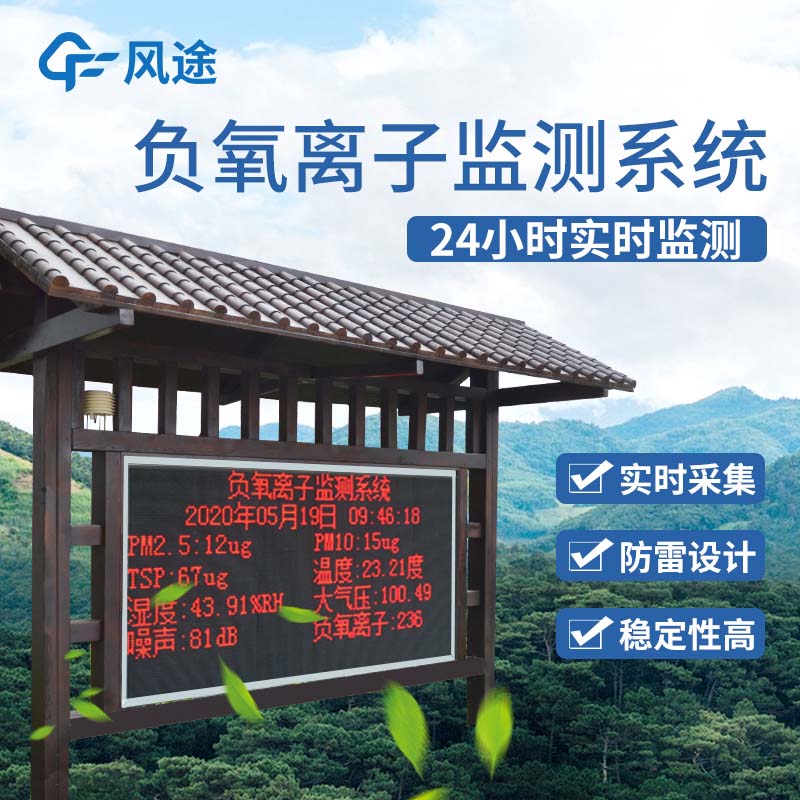Tianyi Sensor IOT Technology Co., Ltd
Sales Manager:Ms. Emily Wang
Cel,Whatsapp,Wechat:+86 15898932201
Email:info@fengtutec.com
Add:No. 155 Optoelectronic Industry Accelerator, Gaoxin District, Weifang, Shandong, China

Sales Manager:Ms. Emily Wang
Cel,Whatsapp,Wechat:+86 15898932201
Email:info@fengtutec.com
Add:No. 155 Optoelectronic Industry Accelerator, Gaoxin District, Weifang, Shandong, China
time:2025-05-19 09:16:52 source:Weather Station viewed:188 time
Negative oxygen ion monitoring stations collect real - time data on negative oxygen ion concentrations in the environment through sensors, and transmit the data to the background for processing and display via communication technologies. The core of this system lies in its precise perception of the number of negative oxygen ions in the air, providing a quantitative basis for environmental quality assessment.
Parks are common locations for negative oxygen ion monitoring stations, primarily due to their rich vegetation. Processes such as photosynthesis in plants and tip discharge of leaves generate negative oxygen ions. Especially in areas with dense trees, flowers, and grass, the concentration of negative oxygen ions is usually high. The monitoring system can visually present the changes in negative oxygen ion concentrations in the park, helping managers understand the effect of vegetation on air quality improvement and evaluate the ecological environment quality of the park.
From the perspective of public demand, negative oxygen ions are called "air vitamins", which have the functions of purifying the air, promoting human metabolism, and enhancing immunity. When citizens go to the park for leisure and exercise, they are concerned about the environmental health. The real - time data on negative oxygen ion concentrations displayed by the monitoring system can enable people to intuitively understand the air quality in the park and provide a reference for choosing the time and place for exercise.
As the ecological window of the city, relevant departments can analyze the evolution trend of the urban ecological environment by collecting long - term data through negative oxygen ion monitoring stations in parks, providing a scientific basis for urban greening planning and the formulation of ecological protection policies. The public disclosure of monitoring data also helps to raise public awareness of the ecological environment and enhance environmental protection awareness.
The widespread application of negative oxygen ion monitoring stations in parks not only meets the needs of environmental monitoring and management but also coincides with the public's pursuit of a healthy living environment, making it a common facility in parks.

The Micro water quality station is a highly integrated professional device that combines various functions such as sensor technology, data collection and processing systems, and communication modules. Its working principle is based on the monitoring of various parameters in the water body by differe...
River Level Monitoring Station is one of the tools in the modern flood control and disaster reduction system. It realizes real-time control of watershed hydrological information through multi-dimensional data collection and intelligent analysis. The system is composed of four major modules: water le...
A miniature sensor is a highly integrated meteorological monitoring device. By integrating multiple miniaturized sensors and processing units, it can realize real-time monitoring and data collection of multiple meteorological elements. The device typically integrates core components such as temperat...
Nowadays, the demand for meteorological monitoring is no longer limited to fixed locations. In scenarios such as field scientific research, emergency rescue and disaster relief, and temporary event venues, people urgently need a means to obtain meteorological data at any time. As a result, the Porta...